Tools
Most of our tools described below are hosted on the lab's GitHub. Some tools are maintained on NetZoo.
Network tools
 PyPanda (van IJzendoorn et al., Bioinformatics): a Python package for gene regulatory network reconstruction using PANDA (Passing Attributes between Networks for Data Assimilation). The original version of PyPanda is available here (by David van IJzendoorn). An updated version is available on here (by Alessandro Marin).
PyPanda (van IJzendoorn et al., Bioinformatics): a Python package for gene regulatory network reconstruction using PANDA (Passing Attributes between Networks for Data Assimilation). The original version of PyPanda is available here (by David van IJzendoorn). An updated version is available on here (by Alessandro Marin).
 PUMA (Kuijjer et al., Bioinformatics): PANDA Using MicroRNA Associations. PUMA is an extension of PANDA that can include miRNAs are regulators in the regulatory network model. C++ and MATLAB versions are available on Github. A Python version of PUMA is available on here (by Alessandro Marin).
PUMA (Kuijjer et al., Bioinformatics): PANDA Using MicroRNA Associations. PUMA is an extension of PANDA that can include miRNAs are regulators in the regulatory network model. C++ and MATLAB versions are available on Github. A Python version of PUMA is available on here (by Alessandro Marin).
 LIONESS (Kuijjer et al., iScience): Linear Interpolation to Obtain Network Estimates for Single Samples. LIONESS is an equation that can be used together with network reconstruction algorithms to extract networks for individual samples. An R package (Kuijjer et al., BMC Cancer) that can be used as a wrapper around unipartite or bipartite network reconstruction functions and that contains an example differential co-expression analysis is available on Github and Bioconductor (by Ping-Han).
LIONESS (Kuijjer et al., iScience): Linear Interpolation to Obtain Network Estimates for Single Samples. LIONESS is an equation that can be used together with network reconstruction algorithms to extract networks for individual samples. An R package (Kuijjer et al., BMC Cancer) that can be used as a wrapper around unipartite or bipartite network reconstruction functions and that contains an example differential co-expression analysis is available on Github and Bioconductor (by Ping-Han).
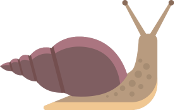 SNAIL (Hsieh et al., Bioinformatics): Smooth quantile Normalization Adaptation for the Inference of co-expression Links. SNAIL is a normalization approach that avoids the formation of false positive associations that may arise from data preprocessing of large-scale heterogeneous RNA-Seq data. SNAIL is available as a Python package on Github.
SNAIL (Hsieh et al., Bioinformatics): Smooth quantile Normalization Adaptation for the Inference of co-expression Links. SNAIL is a normalization approach that avoids the formation of false positive associations that may arise from data preprocessing of large-scale heterogeneous RNA-Seq data. SNAIL is available as a Python package on Github.
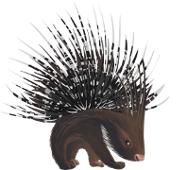 PORCUPINE (Belova et al., NAR Cancer): Principal Component Analysis to Obtain Regulatory Contributions Using Pathway-based Interpretation of Network Estimates. PORCUPINE identifies pathways that display heterogeneous gene regulation across a patient population. PORCUPINE is available in R on Github.
PORCUPINE (Belova et al., NAR Cancer): Principal Component Analysis to Obtain Regulatory Contributions Using Pathway-based Interpretation of Network Estimates. PORCUPINE identifies pathways that display heterogeneous gene regulation across a patient population. PORCUPINE is available in R on Github.
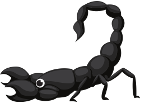 SCORPION (Osorio et al., Nat Comput Sci): Single Cell Oriented Reconstruction of PANDA-based Individually Optimized Networks. SCORPION uses PANDA's message passing algorithm to model gene regulatory networks based on single-cell data. SCORPION is available as an R package on Github and on CRAN.
SCORPION (Osorio et al., Nat Comput Sci): Single Cell Oriented Reconstruction of PANDA-based Individually Optimized Networks. SCORPION uses PANDA's message passing algorithm to model gene regulatory networks based on single-cell data. SCORPION is available as an R package on Github and on CRAN.
 CAVACHON (Hsieh et al., arXiv): Cell cluster Analysis with Variational Autoencoder using Conditional Hierarchy Of latent representatioN. CAVACHON is a hierarchical Variational AutoEncoder that can analyze joint contribution, as well as isolate variability in single data types, based on a Directed Acyclic Graph. CAVACHON can, for example, be applied to integrate and isolate variability in single-cell multi-modal data. A prototype of the method was presented at the NeurIPS 2022 LMLR workshop. CAVACHON is available in Python on Github.
CAVACHON (Hsieh et al., arXiv): Cell cluster Analysis with Variational Autoencoder using Conditional Hierarchy Of latent representatioN. CAVACHON is a hierarchical Variational AutoEncoder that can analyze joint contribution, as well as isolate variability in single data types, based on a Directed Acyclic Graph. CAVACHON can, for example, be applied to integrate and isolate variability in single-cell multi-modal data. A prototype of the method was presented at the NeurIPS 2022 LMLR workshop. CAVACHON is available in Python on Github.
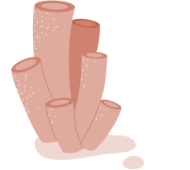 SPONGE (Hovan et al., BioRxiv): Simple Prior Omics Network GEnerator. SPONGE can be used to automatically generate prior networks, to use with e.g. PANDA, based on data from JASPAR and STRING. SPONGE is available in Python on Github.
SPONGE (Hovan et al., BioRxiv): Simple Prior Omics Network GEnerator. SPONGE can be used to automatically generate prior networks, to use with e.g. PANDA, based on data from JASPAR and STRING. SPONGE is available in Python on Github.
 MARMOT (Pop et al., BioRxiv): Model Analysis and compaRison for Multi-Omics Tools. MARMOT is an approach to integrate genome-wide single-sample networks, such as those modeled with PANDA and LIONESS with multi-omics data. MARMOT is available in R on Github.
MARMOT (Pop et al., BioRxiv): Model Analysis and compaRison for Multi-Omics Tools. MARMOT is an approach to integrate genome-wide single-sample networks, such as those modeled with PANDA and LIONESS with multi-omics data. MARMOT is available in R on Github.
Non-network tools
 Retriever (Osorio et al., eLife): Retriever predicts drugs and drug combinations that change disease-specific transcriptomic signatures towards a healthy state through integration of single cell transcriptomic data and disease-specific drug response profile measurements from the LINCS-L1000 project. Retriever is available as an R package on Github.
Retriever (Osorio et al., eLife): Retriever predicts drugs and drug combinations that change disease-specific transcriptomic signatures towards a healthy state through integration of single cell transcriptomic data and disease-specific drug response profile measurements from the LINCS-L1000 project. Retriever is available as an R package on Github.
 SAMBAR (Kuijjer et al., Br J Cancer): Subtyping Agglomerated Mutations Using Annotation Relations. SAMBAR de-sparsifies somatic mutation data into pathway mutation scores, and clusters the data into subtypes using binomial distance. An R package is available on Github. A version for Python is available here (by Genís Calderer i Garcia).
SAMBAR (Kuijjer et al., Br J Cancer): Subtyping Agglomerated Mutations Using Annotation Relations. SAMBAR de-sparsifies somatic mutation data into pathway mutation scores, and clusters the data into subtypes using binomial distance. An R package is available on Github. A version for Python is available here (by Genís Calderer i Garcia).
Tool collaborations
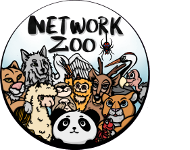 netZoo (Ben Guebila et al., Genome Biol): the network zoo package is developed in the Quackenbush group at Harvard Chan School of Public Health. It integrates several network methods, including PANDA (Kimberly Glass), PUMA, LIONESS, CONDOR (John Platig), and ALPACA (Megha Padi), in one pipeline. It is available in multiple programming languages here (ongoing project). Jupyter notebooks with several use cases of netZoo tools are available on Netbooks (Ben Guebila et al., Nature Meth).
netZoo (Ben Guebila et al., Genome Biol): the network zoo package is developed in the Quackenbush group at Harvard Chan School of Public Health. It integrates several network methods, including PANDA (Kimberly Glass), PUMA, LIONESS, CONDOR (John Platig), and ALPACA (Megha Padi), in one pipeline. It is available in multiple programming languages here (ongoing project). Jupyter notebooks with several use cases of netZoo tools are available on Netbooks (Ben Guebila et al., Nature Meth).
 rPanglaoDB (Osorio et al., Bioinformatics): rPanglaoDB is an R package to download and merge labeled single-cell RNA-Seq data from the PanglaoDB database. The package is available on CRAN.
rPanglaoDB (Osorio et al., Bioinformatics): rPanglaoDB is an R package to download and merge labeled single-cell RNA-Seq data from the PanglaoDB database. The package is available on CRAN.
 YARN (Paulson et al., BMC Bioinformatics): Yet Another RNA-Seq package (by Joe Paulson). YARN offers robust multi-tissue RNA-Seq preprocessing and normalization and is available on Bioconductor.
YARN (Paulson et al., BMC Bioinformatics): Yet Another RNA-Seq package (by Joe Paulson). YARN offers robust multi-tissue RNA-Seq preprocessing and normalization and is available on Bioconductor.
Resources
- Multiple resources are available on the Kuijjer Lab's Zenodo data page, including:
- Gene regulatory networks for 38 human tissues, modeled with PANDA

- miRNA gene regulatory networks for 38 human tissues, modeled with PUMA

- Gene and pathway mutation scores for 5,805 primary tumors, calculated using SAMBAR

- PUMA-predicted tissue-specific functions of miRNAs are available in a Shiny app
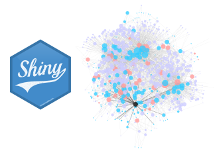
- A large collection of single-sample networks are available in GRAND GRAND (Ben Guebila et al., Nucl Acids Res), a database developed by Marouen Ben Guebila from the Quackenbush group.
- Single-sample networks for 9,435 samples derived from 38 GTEx tissues are available on the Glass Lab page
 SCORPION (Osorio et al., Nat Comput Sci): Single Cell Oriented Reconstruction of PANDA-based Individually Optimized Networks. SCORPION uses PANDA's message passing algorithm to model gene regulatory networks based on single-cell data. SCORPION is available as an R package on Github and on CRAN.
SCORPION (Osorio et al., Nat Comput Sci): Single Cell Oriented Reconstruction of PANDA-based Individually Optimized Networks. SCORPION uses PANDA's message passing algorithm to model gene regulatory networks based on single-cell data. SCORPION is available as an R package on Github and on CRAN.
 CAVACHON (Hsieh et al., arXiv): Cell cluster Analysis with Variational Autoencoder using Conditional Hierarchy Of latent representatioN. CAVACHON is a hierarchical Variational AutoEncoder that can analyze joint contribution, as well as isolate variability in single data types, based on a Directed Acyclic Graph. CAVACHON can, for example, be applied to integrate and isolate variability in single-cell multi-modal data. A prototype of the method was presented at the NeurIPS 2022 LMLR workshop. CAVACHON is available in Python on Github.
CAVACHON (Hsieh et al., arXiv): Cell cluster Analysis with Variational Autoencoder using Conditional Hierarchy Of latent representatioN. CAVACHON is a hierarchical Variational AutoEncoder that can analyze joint contribution, as well as isolate variability in single data types, based on a Directed Acyclic Graph. CAVACHON can, for example, be applied to integrate and isolate variability in single-cell multi-modal data. A prototype of the method was presented at the NeurIPS 2022 LMLR workshop. CAVACHON is available in Python on Github.
